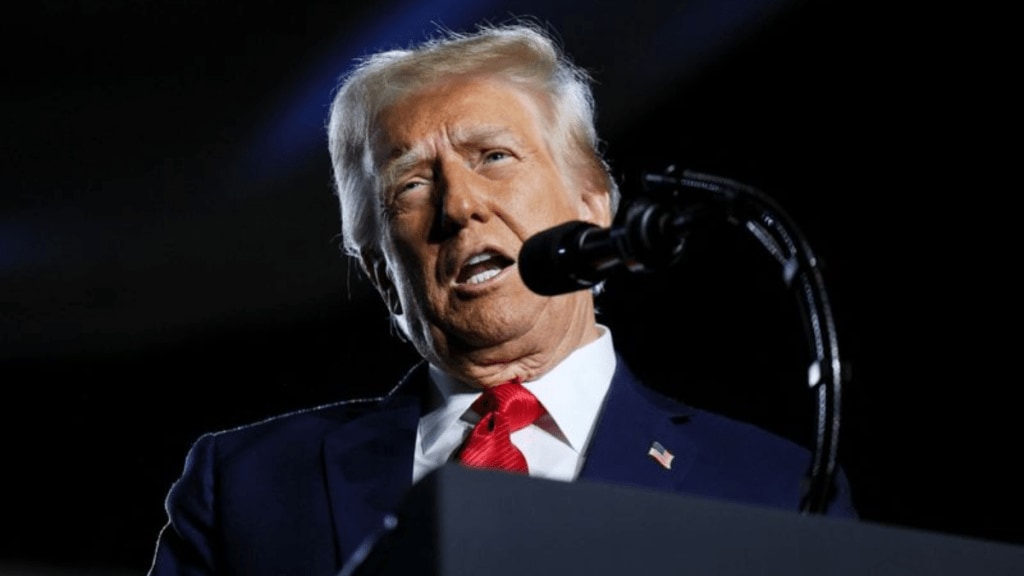Amid ongoing global trade tensions, India has managed to largely sidestep the tariff battles ignited by US President Donald Trump. While countries like China, Mexico, and Canada have been the focus of his tariff hikes, India has avoided direct measures so far. But is India truly immune to the US president’s tariff threats, or is it carefully navigating this volatile situation?
Here’s how India is dealing with the threat diplomatically and adjusting its trade policies to maintain a steady course.
India’s position in global trade
India’s relative immunity from US tariff threats can be attributed to the nature of its exports. Unlike China or Mexico, which directly compete with US industries in sectors like technology and manufacturing, India’s key exports” pharmaceuticals, auto components, chemicals, textiles, and gems do not directly overlap with major US industries.
As Ajai Sahai, Director General of the Federation of Indian Export Organisations (FIEO), explains, “India is less likely to feel the heat as we are generally not competing with US companies.”
The sectors India specializes in are not a significant threat to US companies, which makes retaliatory tariffs less likely. Sahai further points out that the tariff threat may be a tactic to pull India to the negotiating table, rather than a prelude to actual tariff impositions. “The threat of tariffs on us will be a ploy to bring us to the negotiating table for better market access for U.S. goods and services,” he adds. In this context, India is working to find a balance, reducing tariffs selectively to ease tensions while not sacrificing domestic interests.
India’s 2025 Budget adjustments and trade tariffs
Although India has been largely spared from direct tariff measures, it is not completely unaffected by global trade pressures. In its 2025 budget, India made strategic cuts to import duties on goods like high-end motorcycles, including those from Harley-Davidson. The tariff on motorcycles with engine capacities above 1,600 cc was reduced from 50% to 30%, signalling India’s openness to trade.
Finance Secretary Tuhin Kanta Pandey underscored that India’s policies are not protectionist. In an interview to newswire Reuters, he said: “We don’t want to give anybody any signal that we would like to be protectionist.”
India is striving to create a favourable business climate while supporting domestic industries to become more competitive over time. However, analysts like Ajay Srivastava, founder of the Global Trade Research Initiative, caution that India’s average tariff rates remain high compared to other developed countries. “India’s average tariffs are still much higher compared to the United States, Japan, and China,” Srivastava notes.
Despite reductions in specific tariffs, India still applies surcharges and other duties, which keep its overall tariff structure relatively high. This indicates that while India is open to trade, it is also protective of its local industries, especially in sectors such as agriculture and small-scale manufacturing.
Diplomatic Engagement and the US-India Relationship
While India’s economic relationship with the US is at a crucial juncture, the broader diplomatic ties between the two countries remain strong. Despite Trump’s tariff policies, which have stirred tensions with various nations, India has maintained a cooperative stance. Prime Minister Narendra Modi and President Trump have regularly emphasized the strategic importance of their bilateral relationship, particularly in areas such as defence, technology, and security.
India’s Ministry of External Affairs has also been proactive in addressing US concerns, especially regarding the issue of undocumented Indian nationals in the United States. Though the matter remains a sensitive topic, both countries are engaged in dialogue to ensure it does not interfere with broader trade relations. According to sources familiar with the developments, the US has not raised any substantial trade issues directly with India in recent years.
Furthermore, India has avoided being included in Trump’s broader tariff threats against the BRICS bloc, which includes Brazil, Russia, China, and South Africa. This is a testament to the fact that the US-India relationship, based on mutual trust and shared strategic objectives, remains relatively unaffected by tariff threats.
Implications for India
While Trump has occasionally alluded to imposing tariffs on BRICS nations, including India, no concrete actions have materialized. “The fundamentals of the bilateral relationship remain strong,” said one government official, highlighting that trade between India and the US reached $190 billion in 2023. This strong economic engagement serves as a buffer against any immediate tariff concerns.
Despite occasional threats of tariffs on countries like India, US trade priorities remain focused primarily on China. As long as the tariff war between the US and China continues, India remains relatively insulated from major trade disruptions with the US.

